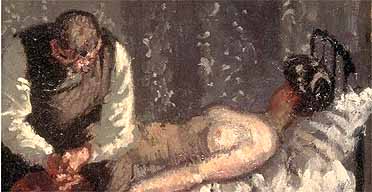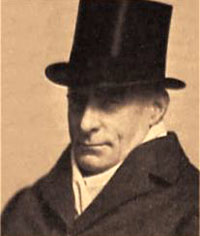
The American crime novelist Patricia Cornwell was accused of "monstrous stupidity" for ripping up a canvas to prove that the Victorian painter Walter Sickert was Jack the Ripper.
Even in the context of the crackpot conspiracy theories, elaborate frauds and career-destroying obsessions that London's most grisly whodunnit has spawned, Cornwell's investigation is extreme. Not only did she have one canvas cut up in the vain hope of finding a clue to link Sickert to the murder and mutilation of five prostitutes, she spent £2m buying up 31 more of his paintings, some of his letters and even his writing desk.
Like so many before her, Cornwell, 45, a former mortuary assistant who amassed a £100m fortune from her Kay Scarpetta novels, is staking her reputation on her sleuthing and her reading of one of the artist's most dark and teasing paintings, The Camden Town Murder, in which a naked woman is shown trying to ward off a glowering, fully clothed man.
Nevertheless, that has not stopped her declaring she is "100% certain" that she has cracked a case that has driven so many to distraction. "If someone proves me wrong, not only will I look horrible about it, I will lose my reputation," she admitted.
Sickert, regarded by some as the greatest British painter between Turner and Bacon, has been linked to the murders before, but usually as an unwilling accomplice in a masonic conspiracy to cover up for the Duke of Clarence, Queen Victoria's dissolute grandson, whose passion for whoring in the East End left him with syphilis of the brain. The artist's name came into the frame when a man calling himself Joseph Sickert, and claiming the childless Sickert was his father, said the painter had confessed his part in the plot shortly before his death in 1942.
Cornwell is more direct, however, claiming that Sickert - who made no secret of his fascination with the killings - was Jack himself. "I do believe 100% that Walter Richard Sickert committed those serial crimes, that he is the Whitechapel murderer," she told a US TV show.
More sensationally still, Cornwell, who paid for a battery of forensic tests, is convinced that a defect in Sickert's penis, coupled with his failure to procreate from any of his three marriages and numerous affairs, turned him into a serial killer. Nor, she claims, were Polly Nichols, Annie Chapman, Elizabeth Stride, Catherine Eddowes and Mary Kelly - all slain between August 31 and November 8 1888 - the only women he killed.
Cornwell's suspicions were sharpened by a series of pictures Sickert painted in 1908, prompted by the murder of a Camden prostitute, which Cornwell claims have an eerie similarity to the autopsy pictures taken of the Ripper's victims. "This painter never painted anything he had not seen," said Cornwell. "This man was a very smart man. If you have these murders going on then you started painting pictures of disembowelled women on the streets, somebody is going to say, 'Let's go take a look at this guy.'"
In one painting of a woman with a pearl necklace, Cornwell said the pose was identical to that of Kelly's when as she was found by police, the only one of the women to be murdered in her bed. Another showed a woman's face mutilated by paint in a way similar to Eddowes's wounds.
But Cornwell's claims - which are to form the basis of her next book - were met with derision yesterday by Sickert experts and biographers outraged that one of his paintings had been sacrificed "to add credence to this silly theory". Their only consolation was that Cornwell appears to have paid well above the market rate for her collection.
Even so, one of the London dealers who sold her two Sickerts this year said Cornwell had "gone beyond the pale". Andrew Patrick, of the Fine Arts Society, who refused to say which paintings she had bought from him, said: "If as is claimed a painting was cut up, that is very wrong. Everyone knows this stuff about Sickert is nonsense. He loved these dramatic titles, and to play with the idea of menace."
Richard Shone, who curated the last big Sickert show at the Royal Academy in London in 1992, said: "I can't believe she has done this, it's such a red herring. It all sounds monstrously stupid to me. Is she so obsessed that she doesn't mind the destruction of a painting by such a very fine artist to add credence to this silly theory? If even Sickert were Jack the Ripper it would not justify this. It's like taking a Caravaggio apart to investigate the stabbing he was involved in. It's mad."
He added: "Sickert was interested in the music hall, the theatrical and low life, and he played around with these themes like Degas, his mentor. He always painted from photographs, and was one of the first artists to do so."
Although Cornwell failed to find any DNA on letters held by Scotland Yard, written by a man purporting to be the Ripper, to compare with samples taken from Sickert's desk and canvasses, she claimed to have made one breakthrough. One letter had the same unusual watermark as Sickert's writing paper, provided by his stationer father.
"If a jury then had seen that," she said, "they would have said 'hang him'."

Walter Sickert

No comments:
Post a Comment